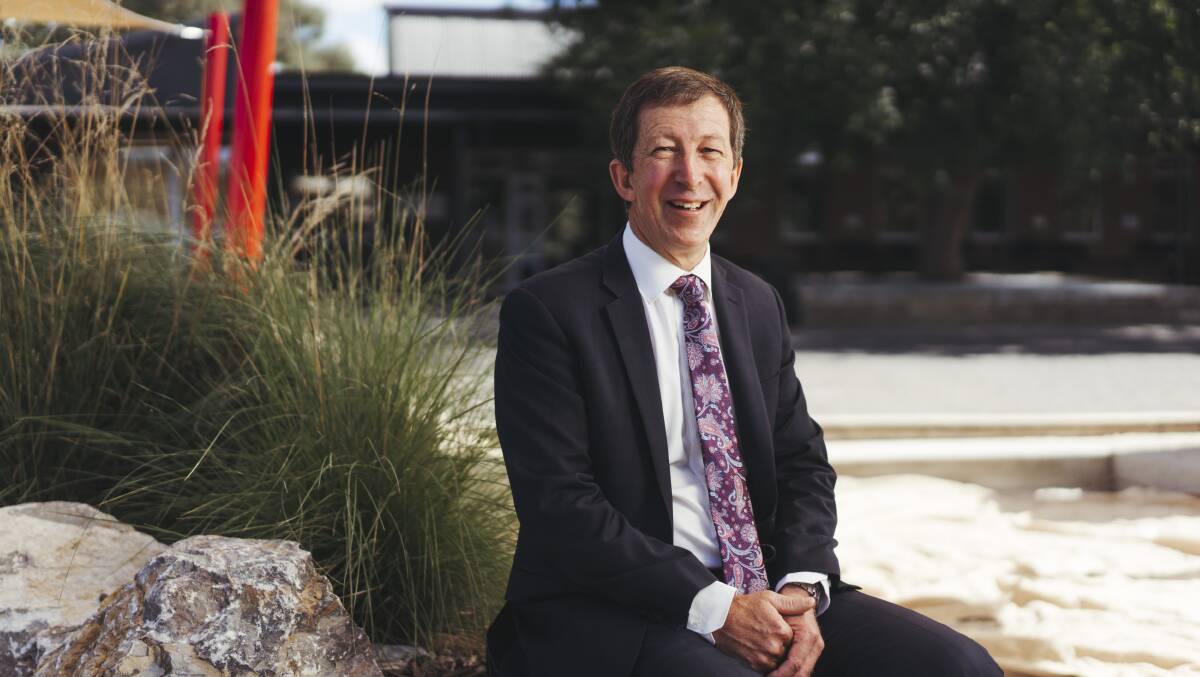
Most Canberra private school parents will be paying more for tuition fees this year as some schools move to simplify their fee structures.
Schools have had to grapple with the financial effects of the pandemic on families and school budgets while factoring in the gradual move to the direct measure of income methodology for government funding.
Tuition fees at Canberra Grammar School for year 11 and 12 students climbed to $27,150, an increase of 2.9 per cent, while Canberra Girls Grammar is not far behind at $26,385 for the senior years.
Most private schools have implemented an increase of about 4 per cent on 2021 rates, including Burgmann Anglican School, Daramalan College and Brindabella Christian College.
Trinity Christian School has a unique fee structure which offers discounts for low-income households as well as the common sibling discount.
Principal Ian Hewitt said the new rate of $10,989 for secondary students and $7,578 for primary students was now an all-inclusive fee.
"Whatever you see on the website, that amount includes any IT levy there might be, it's any school camps, excursions, any other resources for specialist subjects, everything is included in that one fee," Mr Hewitt said.
"So families also know for budgeting purposes, that's what it will cost for the whole lot of school fees for my child for the entire year."
Mr Hewitt said the school had negotiated payment plans for families who had suffered financially during the pandemic while finding savings and reducing the school's surplus. The school considers the consumer price index for families and education as well as wages growth in determining any increase in school fees.
"The past couple of years, we've increased well below CPI. Last year's fee increase was 1 per cent and this year is 2 per cent as our base increase, so we've been able to maintain that really well for families to just try and keep a lid on those expenses for their schooling, knowing other CPI costs have gone up significantly."
Orana Steiner School has also significantly changed its fee structure this year, opting for an all-inclusive fee that takes in excursions, camps, maintenance levies and curriculum expenses. The fee for year 11 and 12 students at Orana this year is $15,450.
Principal Geoff Fouracre said the school ensured that families would face an increase of no more than 5 per cent under the new fee structure. The school board decided to give a $500 discount per child because of savings made during the period of remote learning in 2021.
Emmaus Christian School decided not to increase its all-inclusive fees for a second year in a row.
Catholic systemic schools have increased fees by about 5 per cent, with variations depending on the needs of each school.
Director of Catholic Education in Canberra Goulburn Archdiocese Ross Fox said the increase was in response to rising costs and cuts to ACT government funding.
"When setting fees, we try to find a balance between providing our schools with the resources they need to provide a high-quality Catholic education while remaining affordable for a diverse group of families," Mr Fox said.
"We are committed to ensuring no child will be denied a Catholic education because of their family's financial circumstances and over the past two years we have provided families with more than $1.3 million in fee concessions.
"We encourage any families who are concerned about their capacity to pay fees to contact their individual school for a confidential discussion on how they can be supported."
Association of Parents and Friends of ACT Schools executive officer Jenni Rickard said parents expected fees to increase each year and that factored into their choice of school.
"Every school year is a bit more expensive than the last school year," Mrs Rickard said.
"I think parents have an expectation for school fees and they kind of work that into their budget, but it is the additional things, I think, that sometimes put more pressure on them than what they planned, things like technology, school uniforms, those additional excursions."
Mrs Rickard said most schools refunded fees for excursions or camps that had to be cancelled because of COVID-19 or tried their best to deliver a similar service to what was planned.
The Productivity Commission's recent report of government services showed that ACT has the lowest level of recurrent government funding per private school student in the country at $10,976. This indicates the relative affluence of Canberra's non-government school parents. The Australian average was $13,189 per student and the highest level was $16,376 per student in South Australia.
From this year the direct measure of income is being used to determine the base level of federal funding each school receives under the schooling resource standard. This takes the median taxable income of parents and guardians to determine each school community's capacity to pay fees.
Previously the funding levels were set based on the socio-economic status the school's geographic location.
Mrs Rickard said despite rising costs, non-government schools still presented value for money.
"I think Australians on the whole value their ability to choose the type of school that they wish to send their kid to. And whether that is a public school or a non-government school, I think parents feel that they're getting their value whatever school [they choose]."







